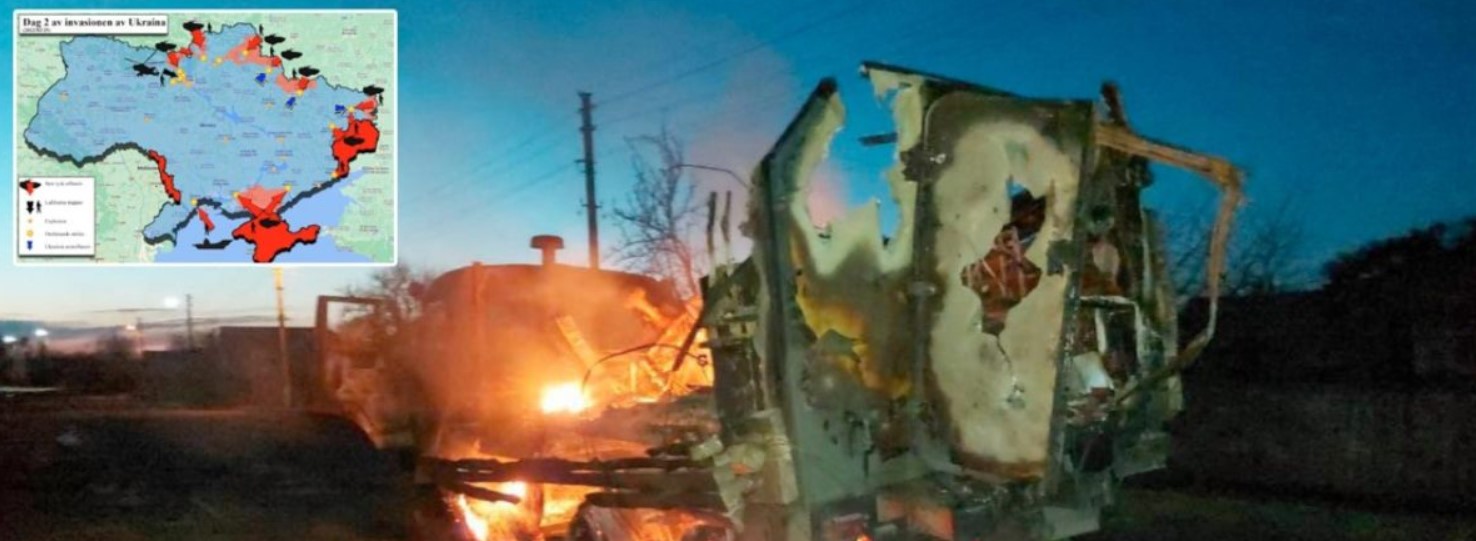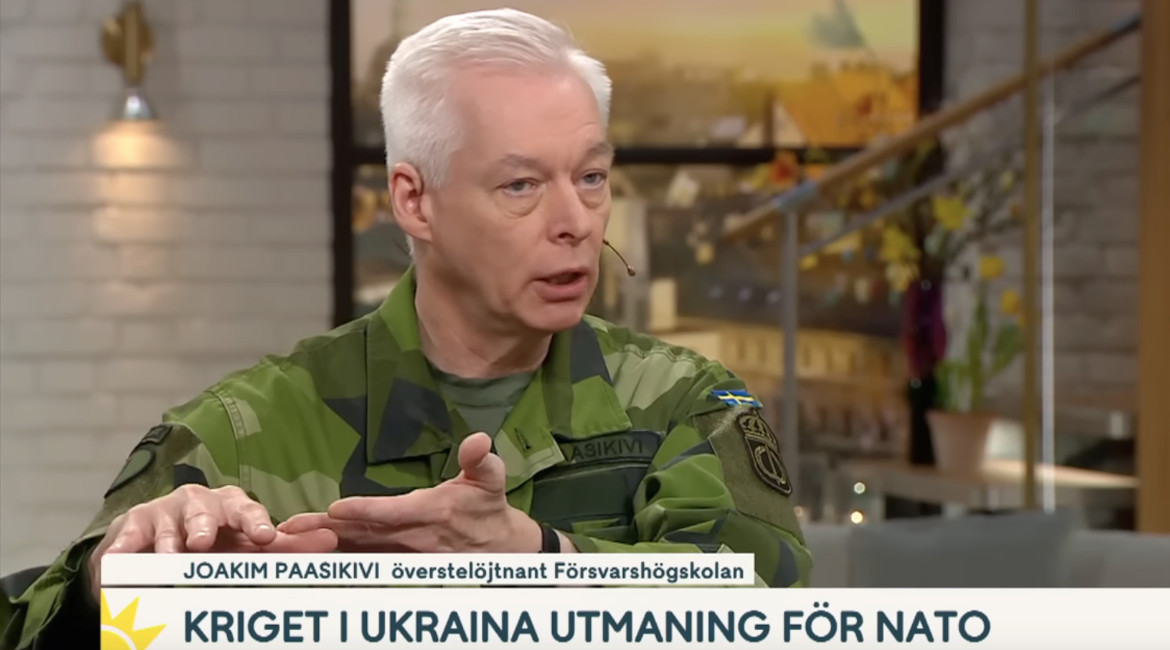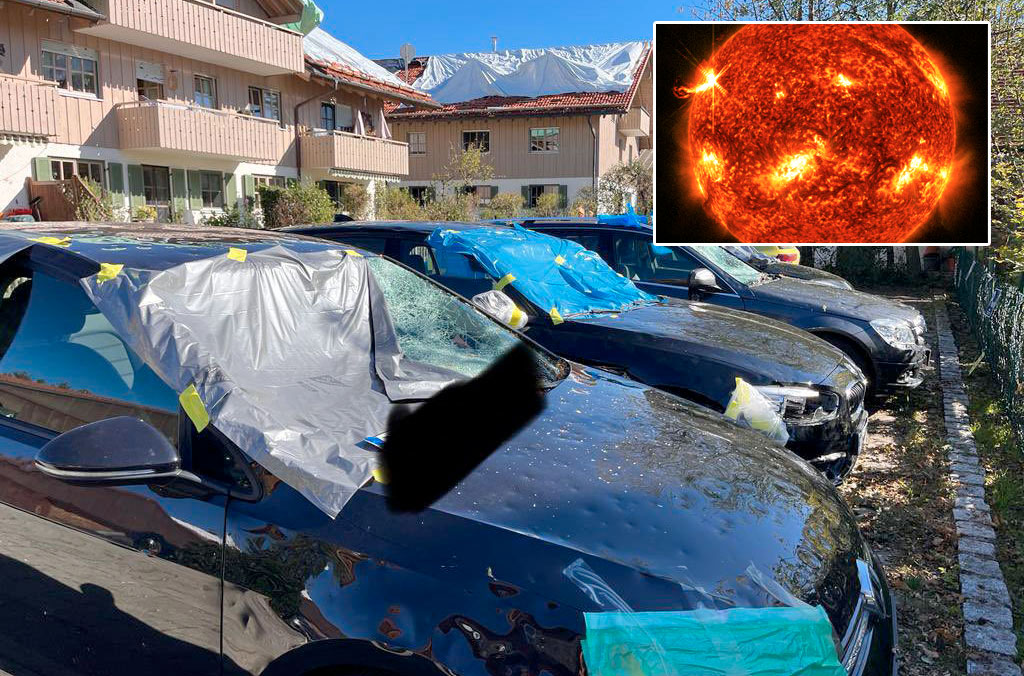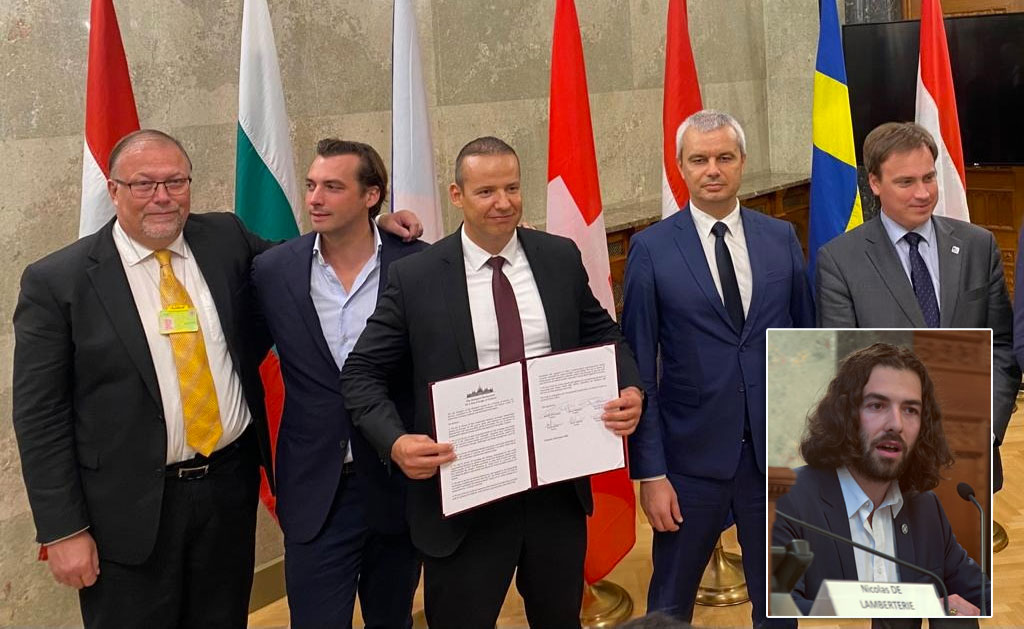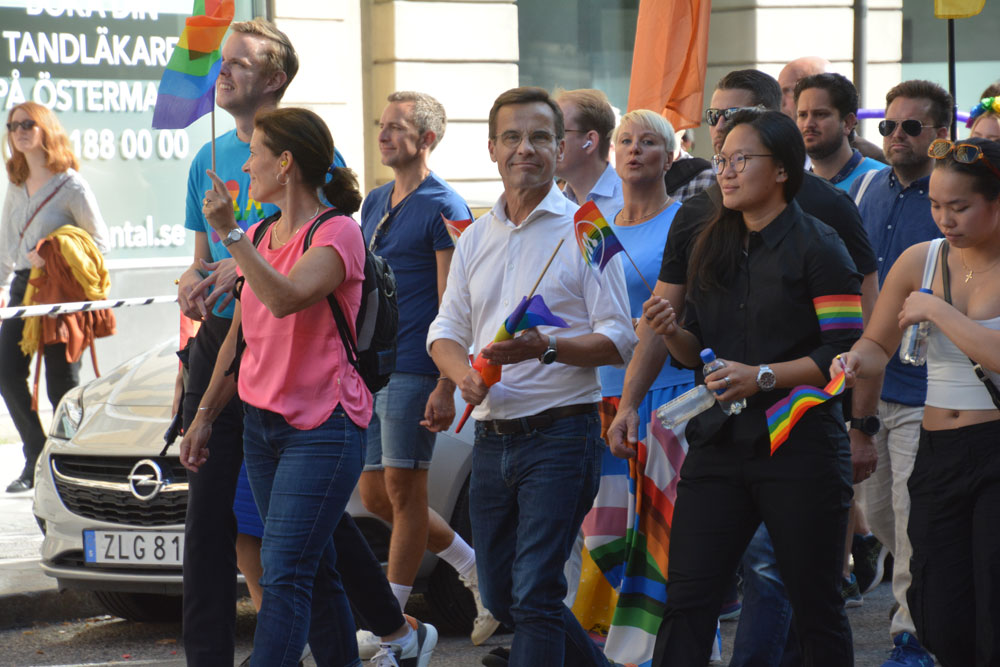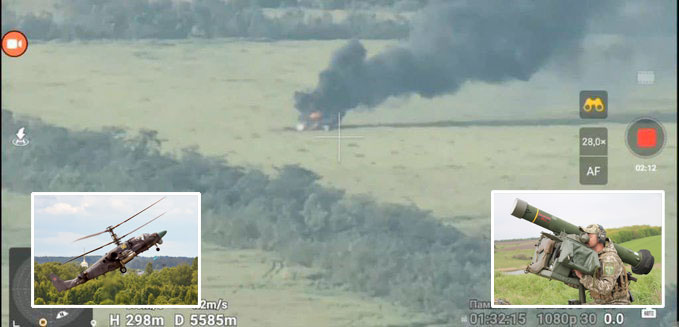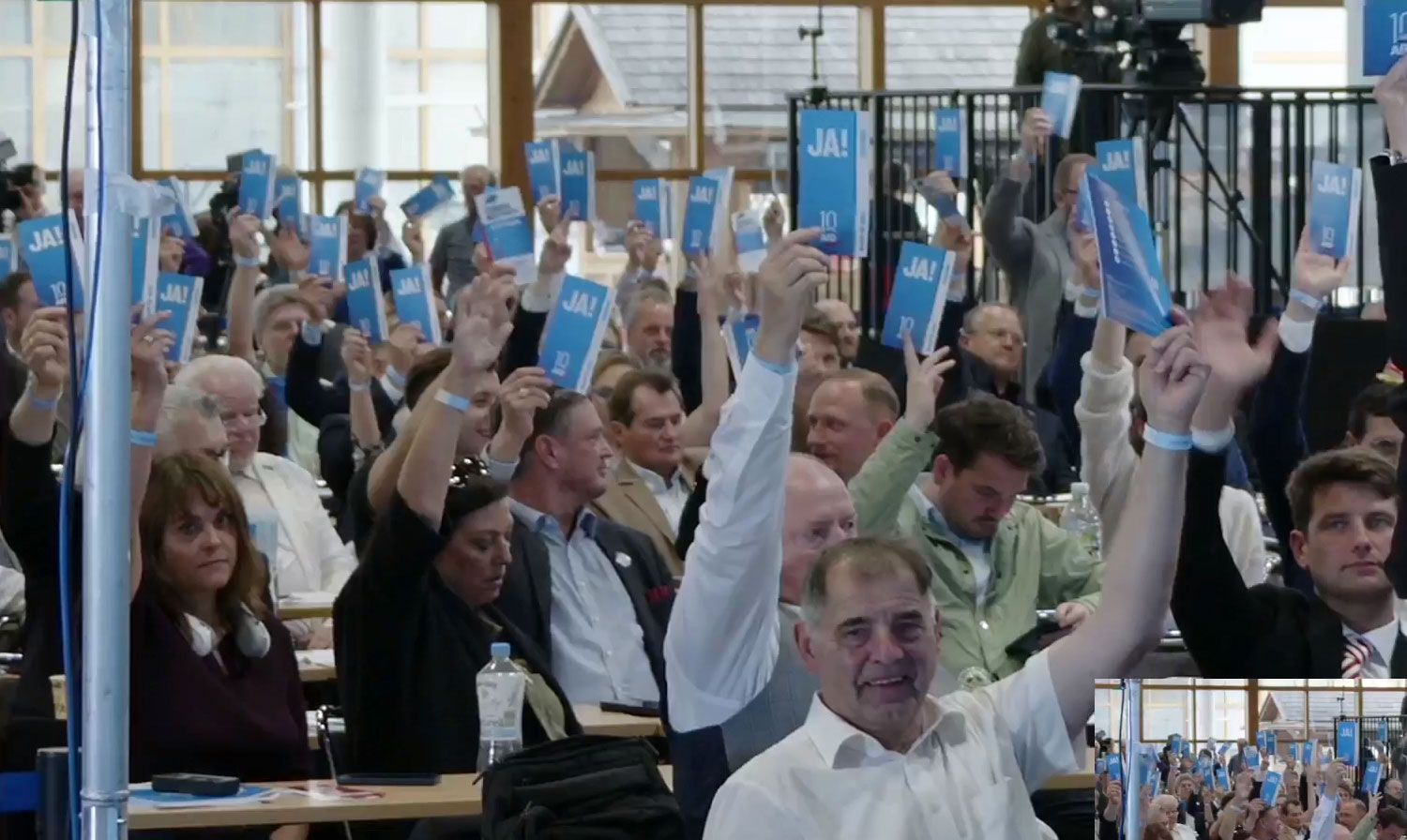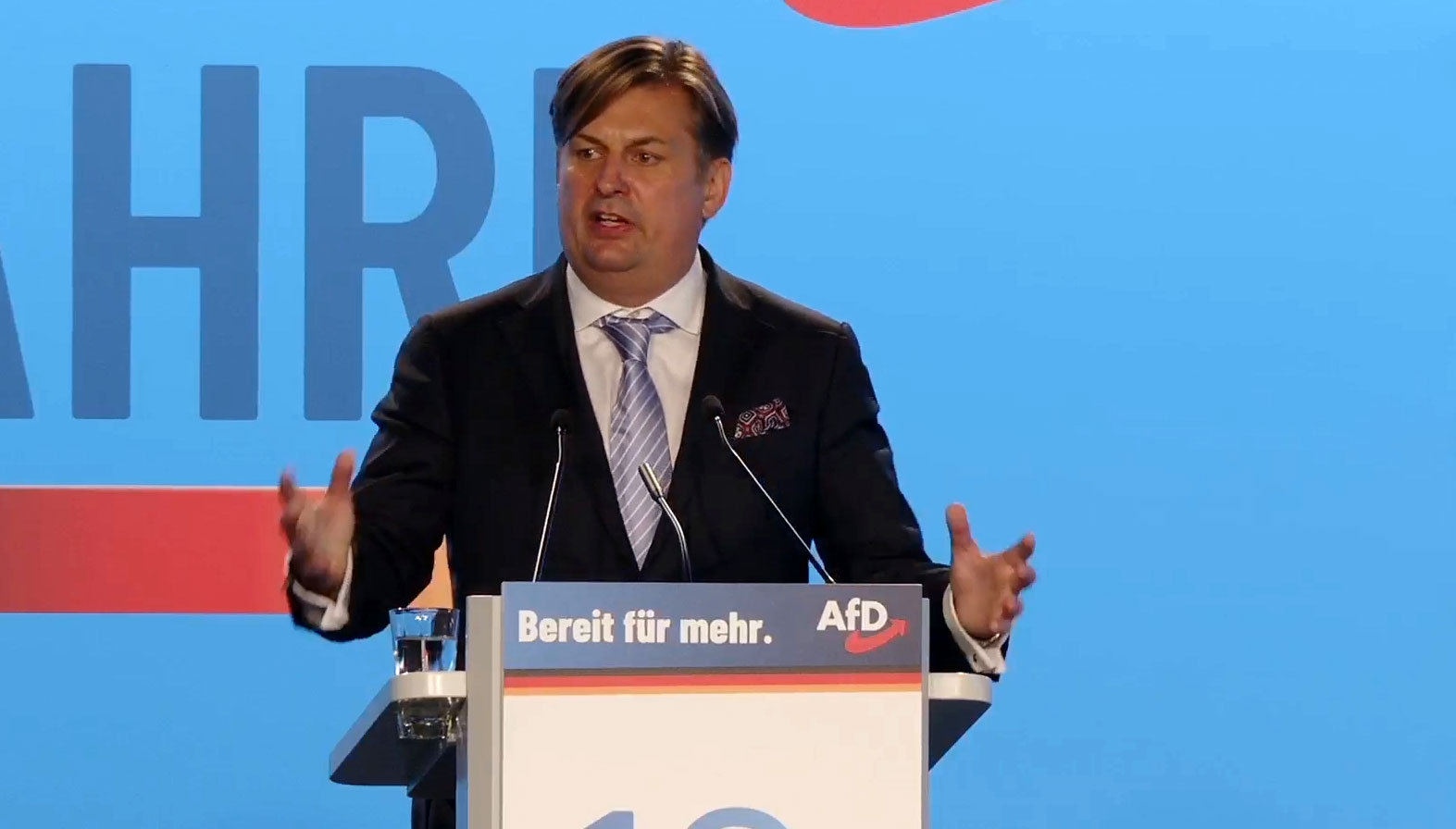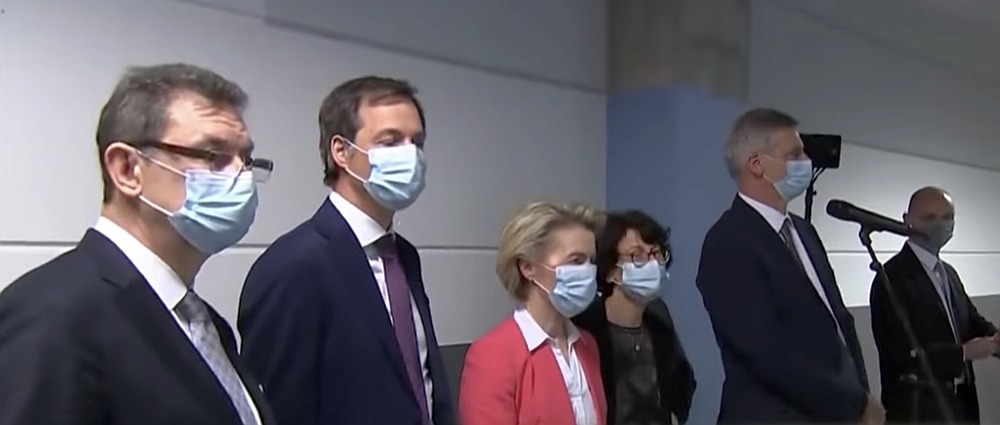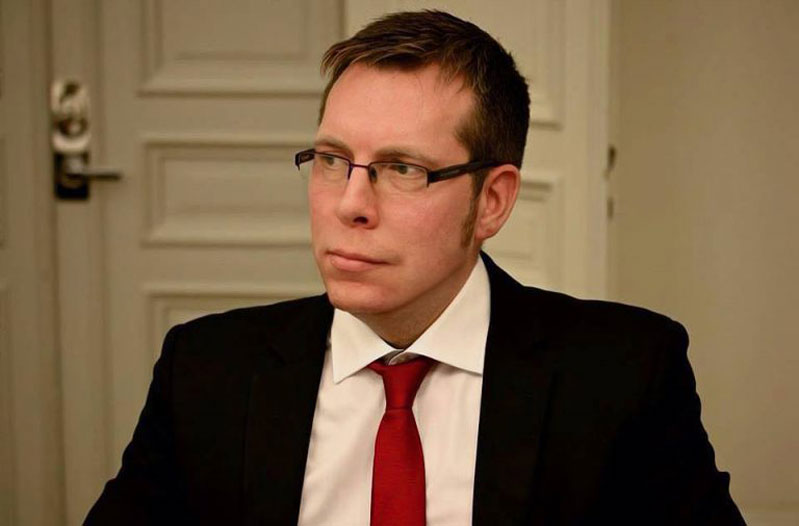Yesterday’s extensive attacks on strategic targets inside Ukraine with cruise missiles, artillery and air strikes became the start of the full-scale invasion of Ukraine. Russian forces have since carried out extensive ground attacks and raids with elite soldiers far behind the Ukrainian lines of defense. In several places, Russian troops and armor have been able to penetrate far into Ukrainian soil and sweep away the defense, but in other places they have met with surprisingly stubborn resistance. In some cases, mainly in eastern Ukraine, combined ambush tactics and regular counter-offensives have led to Russian losses.
During the second day of the invasion, the Russian focus has instead been on encircling and penetrating the capital Kiev, which according to some observers is the only chance to get the Ukrainian leadership to order capitulation. Fierce fighting is now taking place in several parts of Ukraine, and the death toll is rising rapidly.
But military experts warn that yesterday’s development will fade compared to today’s – only a third of the Russian forces were deployed then, and mainly against tactically important targets.
Great Russian success in the south
On the night before Friday, the British Ministry of Defense released its assessment where they write that Russia most likely did not achieve the goals set for the first day of the invasion, thanks to the opposition from Ukrainian forces. According to the British Ministry of Defense, the Russian attackers had around 400 killed during yesterday’s fighting. It is unclear how many have fallen in total so far on the Ukrainian side, but there are several hundreds according to different sources.
Some of the biggest successes achieved by the Russian invasion troops on Thursday and Friday are in southern Ukraine, north of the Crimean peninsula annexed since 2014. Russian units supported by elite soldiers could quickly penetrate the border positions and only sporadic fighting broke out at the cities of Chaplynka and Kalanchak as well as Nova Maiachka in the western parts and Novotroitske, Novooleksiivka and the strategically important Henichesk on the coast in the eastern parts.
Very fierce fighting has, however, brought the invasion to a halt at the larger city of Kherson on the Dnieper River, although Russian troops have managed to cross the water via the nearby town of Kozatske despite stubborn resistance.
The Russian troops have been divided into two groups here, one that is slowly advancing through the defense around the Dnieper further north and one that instead moved east along the coast in the direction of Mariupol. The eastern forces are involved in fierce fighting near the city of Melitopol but have not yet succeeded in conquering the city.
Ukrainian stubborn resistance in the east
In general, the Ukrainian resistance in the eastern parts of the country has been tougher and more effective than in the west, possibly because the troops there have considerably greater combat skills and for several years have been able to construct defensive positions that are difficult for the attackers to break through. It has not least been noticed in the coastal city of Mariupol that initially, but incorrectly, was conquered already early on Thursday morning.
New information instead claims that Russian troops and separatist forces from the breakaway province of Donetsk tried to infiltrate the city but did not get further than the eastern suburbs before being repulsed and forced to retreat. The Russian troop movement from the west in Crimea seems to be aiming to reach the city from the considerably less defended areas west of the city. No major breakthroughs have been reported around the border areas of either Donetsk or Luhansk, and the Ukrainian defenders have been able to carry out several counterattacks here with extensive Russian and separatist losses and fewer Ukrainian ones, according to reports that have reached FWM from the front.
North of Luhansk, Russian troops backed by separatists have been able to make some military progress, including extensive armored attacks, but have been stopped by defenders near the town of Starobilsk, where Ukrainian troops using armored defense and artillery have caused some Russian casualties. The fighting around the city is believed to be very fierce. In the afternoon, the Ukrainian Central Command announced that it was conducting a counter-offensive starting from the city.
The second largest city in Ukraine, Kharkiv, which has a population of 1.4 million and is less than 20 km from the Russian border, has proved to be a very difficult nut for the Russian military to crack. Despite initial successes north of the city and reports of a full retreat among Ukrainian soldiers on Thursday, a counter-offensive as well as ambush and rapidly built-up defensive positions have left the city largely divided between the Ukrainian defenders and the Russian attackers.
Russian artillery and aircraft are increasingly bombarding the city with hundreds of civilian casualties so far and an unknown number injured. In the city center, thousands of civilians seek refuge in the subway and in bunkers. Despite promises from Russia to try to minimize civilian casualties, there is an increasingly extensive bombing of the city.
On the Internet, residents are posting more and more pictures of destroyed multi-storey buildings and also Russian projectiles and rockets that have not detonated. At the same time, several Russian units have suffered heavy losses around the western parts of the city and the goal now seems from the Russian side to try to surround the city with pincer maneuvers, where their offensive east of the city seems to have more success than the western one.
Repulsing Russian units
Probably the biggest losses for the Russians so far have been around the city of Sumy on Thursday night. Several ambushes and a counter-offensive by Ukrainian forces completely pushed away the Russian attackers who, according to information, suffered relatively large losses with very small corresponding Ukrainian losses. The counterattack is seen among sources within the Ukrainian military as an unexpected but welcome victory.
However, Russian troops have passed the strong lines of defense around Sumy and are pushing hard further towards western Ukraine, likely to meet with Russian and Belarusian troops in the process of encircling the city of Chernihiv where an effective Ukrainian defense prevented the attacking Russian and Belarusian troops from advancing further.
Chernobyl and the road to Kiev conquered
North of Kiev, things are looking hopeless for the defenders, who have lost several important positions in a short time. East of the Dnieper, Russian and Belarusian troops have been able to jointly advance to Chernihiv, where they have been involved in fierce fighting with the Ukrainian military since yesterday. Now the Russian forces are in the process of surrounding the city and only a narrow corridor southeast of the city is still in the hands of the defenders.
West of the Dnieper, things have gone even worse for the Ukrainian defenders. There, Russian armor reinforced with Belarusian troops could repel the defenders after heavy fighting that broke out around Chernobyl. The decommissioned nuclear power plant was captured on Thursday afternoon with marginal Russian losses and the Russian troops continued to move south towards Kiev to meet with elite forces from the Russian airborne units in the VDV who were involved in fierce fighting around Gostomel airport outside Kiev.
Sabotage and attacks on the civilian population
On Friday, several groups of saboteurs were stopped by Ukrainian security forces, police and military. Saboteurs have been active in about ten cities and have probably been stationed a long time in advance of the invasion. In the town of Podilskyi in western Ukraine, saboteurs could be arrested near strategically important positions.
In Vinnytsia, also in western Ukraine, which was exposed to several cruise missiles heading for strategic targets, security forces were able to arrest a man who had marked several important objects for air strikes. In the centrally located city of Kropyvnytskyi, security forces were able to arrest a group of saboteurs who were preparing to attack an important strategic object. Inside Kiev, several saboteurs were arrested and killed after several hours of fighting on Friday.
Fierce fighting at airport near Kiev
Yesterday, Russian special forces from the airborne elite units VDV managed to capture the strategically very important airport Gostomel directly west of Kiev. About thirty low-flying helicopters released soldiers who, after a short firefight with a few defenders, captured the airport. Four helicopters were lost during the attack.
Shortly afterwards, a counter-offensive was launched by Ukrainian troops and during the afternoon yesterday, the Russian elite soldiers were forced away from the airport under heavy fire, which was proclaimed a great victory by the Ukrainian authorities. However, according to our sources, the fighting continued a few kilometers north of the airport and on Friday afternoon, new reinforcements of the Russian troops had enabled them to launch a new offensive against the airport. At the time of writing, the Russian Ministry of Defense has announced that it has regained control of the airport.
The airport is important both for the Russians, who want to be able to use it to bring in heavy transport planes with equipment and combat vehicles, and for the defenders who need it to be able to receive munitions from the West – and to prevent a new Russian attack route so close to the capital Kiev. The fact that Russian forces, despite already taking over the airport itself on Thursday, have not been able to secure the surroundings fully to fly in materiel, may have delayed a Russian attack.
The loss of the airport on Friday is a severe blow to the defenders’ long-term ability to hold the city, according to military experts.
Troops on their way into Kiev
During the day, information was received that the Russian forces had achieved some of their first goals and are now moving on to the next part of the invasion – involving the majority of their regular ground troops. Russia expert Oscar Jonsson told Swedish daily Expressen that the Russian military seems to be working on two separate strategies. One against several strategic targets around Ukraine, such as airports and ammunition depots, and one against the political leadership of the capital, Kiev.
“You can divide the military strategies into two. During the night, there have been reports of airstrikes against Kiev and attempts to retake the airport there, while from the Russian side, to airlift more troops near the capital,” he explained.
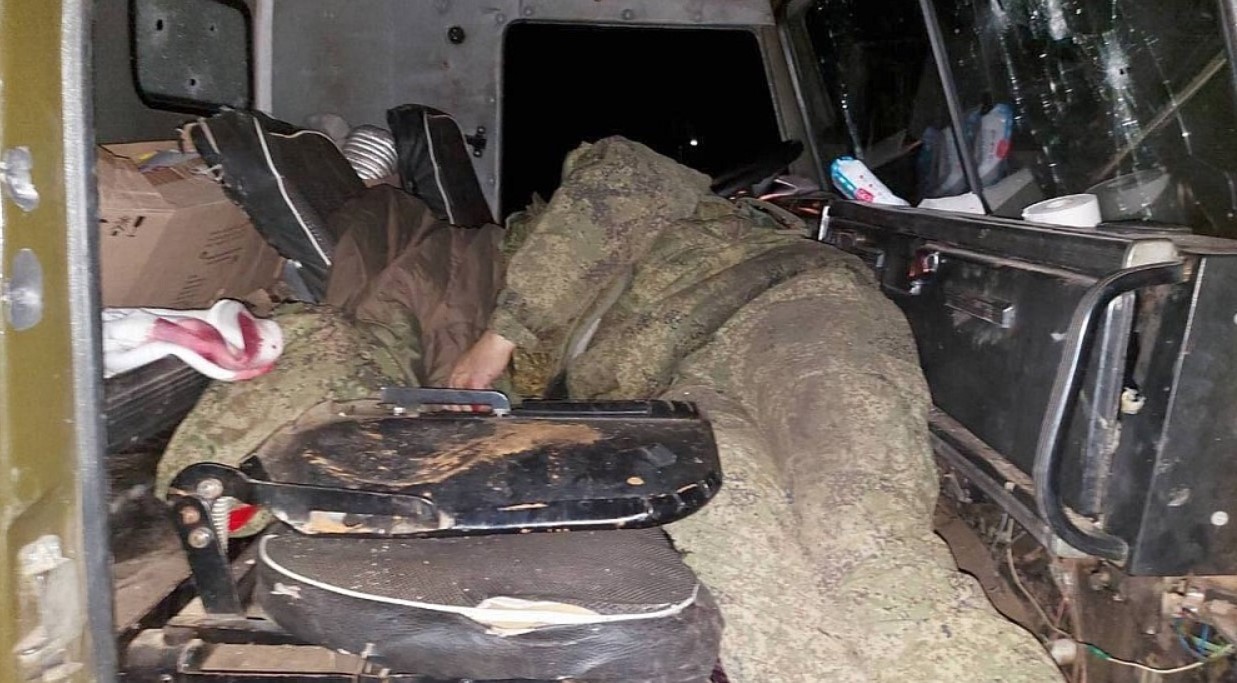
Russian losses in Okhtyra where Russian attacking forces have reportedly been repulsed. Photo: Twitter
The civilian population urged to resist by all means
In Kiev, where the population is being urged to resist by all means, the risks of a major carnage are growing, while smaller formations of Russian troops have been confirmed to have reached the northern parts of the city and fighting there has begun to intensify.
“Make Molotov cocktails, neutralize the enemy,” the Ukrainian Defense Forces wrote in a statement to the citizens.
Witnesses say they have seen unidentified tanks on the streets and the Armed Forces are urging residents of Kiev to report movements and movements of soldiers and equipment.
“Peaceful inhabitants, be careful. Do not leave your homes,” officials warned.
Kiev is now experiencing two ongoing attacks, one from the north where Russian troops have been confirmed to have reached the outskirts of the Obolon district, and from the west where the captured Gostomel airport will be a base for a rapidly growing Russian troop formation. Already on Friday afternoon, Russian troops were confirmed to have taken over control of the western access roads and the motorway M07 and P30 towards the city center.
At the same time as the Russian troops have not yet reached the city with main formations, but only with vanguard, a frantic activity is going on inside the city where defenders are building barricades with the help of trucks and garbage trucks on important roads. According to the Daily Mail, American sources claim that the city may fall within three days.

Ukrainian National Guardsmen in Kiev appear to have occupied an exposed and very difficult-to-defend position in the middle of a bridge: Photo: Twitter
The city and the Ukrainian military have been strangely unprepared for the Russian invasion, despite numerous warnings since November last year and plenty of time to prepare. Now that unpreparedness is costing lives. For the three million inhabitants who are being called upon to fight the Russian attackers, the future does not bode well. According to several experts, the civilian casualties could amount to several thousands if it develops into fierce and protracted battles over the capital.
